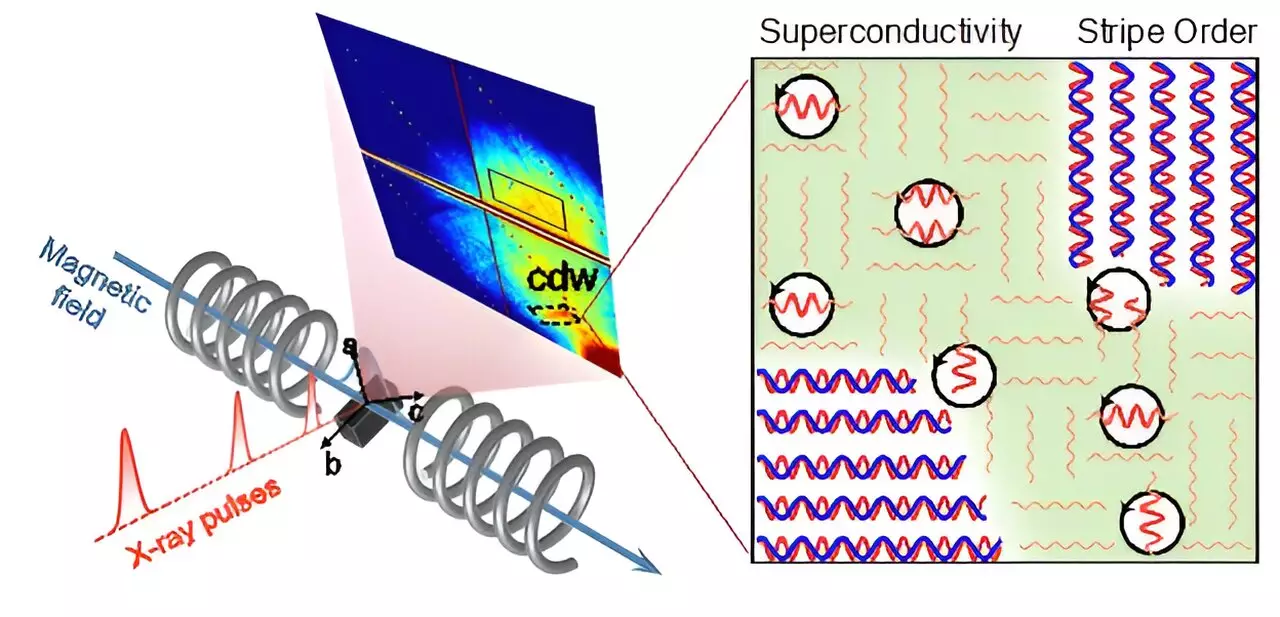Superconducting materials have long intrigued scientists due to their remarkable ability to conduct electricity without resistance under specific conditions. Among the most promising candidates for high-temperature superconductivity are copper-based materials known as cuprates. In these fascinating materials, a complex interplay exists among different electronic properties, particularly magnetic spin behaviors and charge density waves (CDWs). Traditionally, the perception has been that in such superconductors, CDWs and magnetic spin states oppose superconductivity, creating a competitive battlefield for dominance. However, recent groundbreaking findings challenge this conventional wisdom, revealing a hidden compatibility that could redefine our understanding of these systems.
Understanding the Competitive Landscape
In typical metallic environments, electron spins cancel each other out while charges distribute uniformly, leading to predictable behaviors. Yet, in cuprates, this paradigm shifts dramatically. Strong interactions among electrons foster the emergence of complex states, including spin density waves (SDWs) and CDWs. These waves, when synchronized, generate what researchers are calling a “stripe state.” Here, the alignment of peaks in both spin and charge waves creates stability within the system, often at the expense of superconductivity. Such dynamics paint an intricate picture of the cuprate electronic landscape where order and disorder coexist tantalizingly close.
Emerging evidence from recent research published in Nature Communications presents a paradigm shift in this competitive narrative. Scientists discovered that short-range CDWs could instead operate synergistically with superconductivity in cuprates. Contrary to the previously held belief that long-range CDWs suppress superconducting phases, it appears that short-range interactions can coexist with and even enhance superconductivity, opening a new pathway for understanding these complex materials.
Harnessing the Power of Charge Density Waves
Delving deeper into this fascinating interplay, researchers utilized advanced X-ray measurements on a specific cuprate sample, La1.885Sr0.115CuO4. The work revealed that the CDW exhibits two distinct components, each influenced by magnetic field strengths and temperature differentials. This intricacy led to new insights about segregated zones within the material, where regions exhibit either superconductivity or spin-charge order. Such segmentation provides a clearer picture of how robust superconducting phases can persist alongside formidable spin orders.
Moreover, the research unveiled a contradictory but critical observation: at high magnetic fields, where superconductivity is traditionally suppressed, a “vortex liquid state” emerges, allowing for enhanced fluidity of vortices. The unexpected correlation between the melting of vortex states and intensified CDW suggests a complexity where superconductivity under specific conditions can flourish instead of deteriorating.
The Implications for Future Research
What does all this mean for the future of superconductivity? The ability to harness short-range charge order for stabilizing superconductivity offers an exciting avenue for scientific exploration. Enhanced control over these electronic interactions could potentially lead to the development of superconductors that operate effectively at higher temperatures and magnetic fields, crucial for practical applications such as lossless energy transmission and powerful magnetic fields in quantum computing.
The relationship between charge density waves and superconducting states in cuprates may not just be a competitive struggle but rather a cooperative engagement, setting the stage for a unified quantum framework that incorporates the complexities of superconductivity and electron interactions. This research propels cuprate superconductors into an exciting frontier of study, emphasizing the importance of nuanced understanding and the potential for new technological advancements stemming from these findings.

